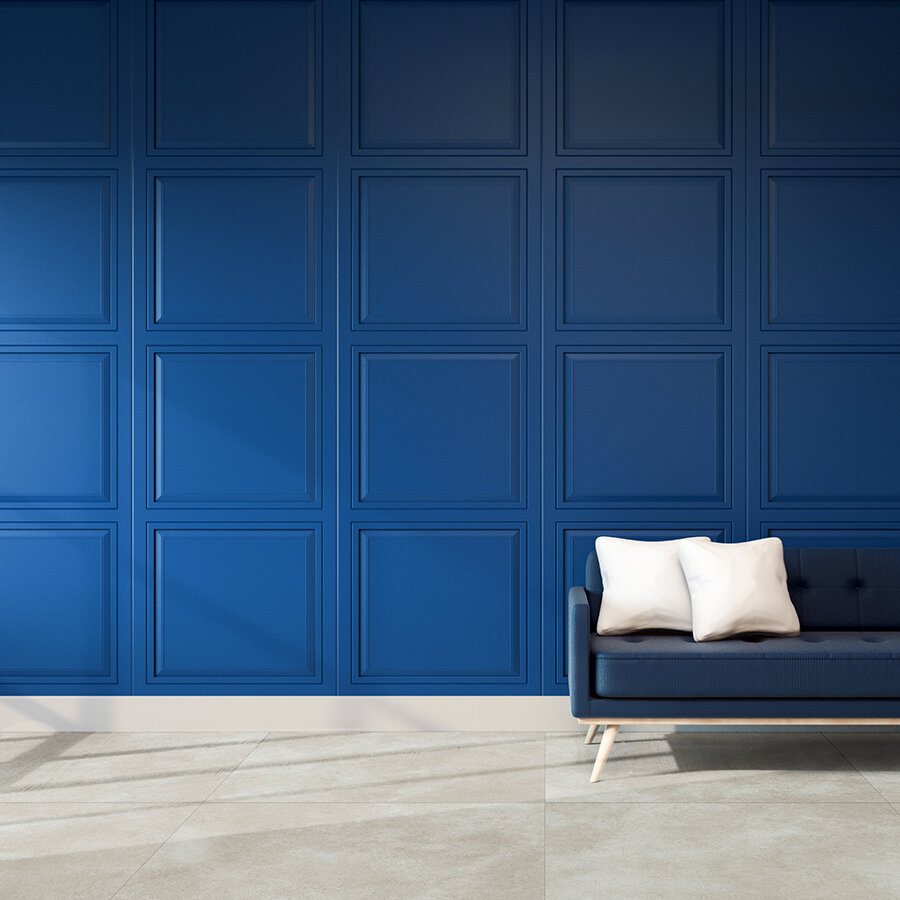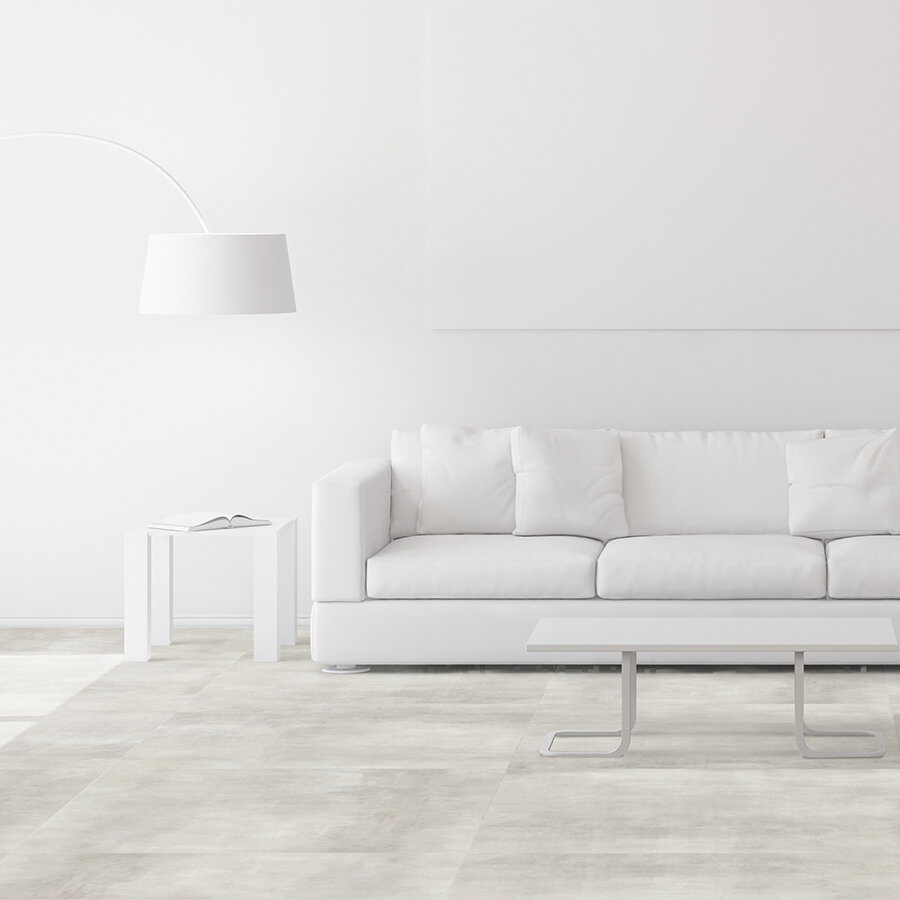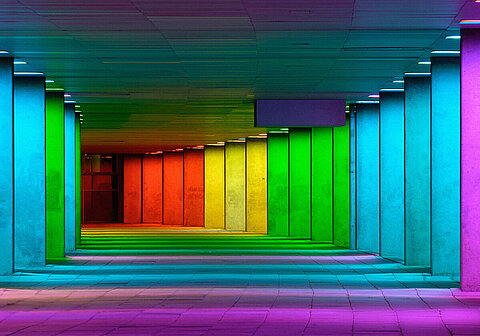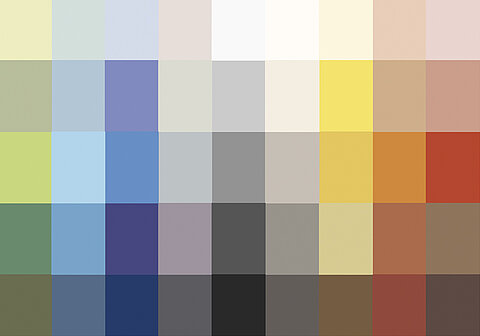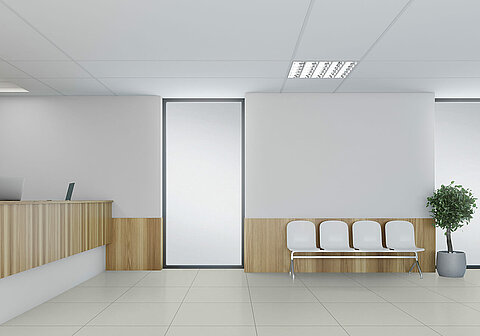Cyanometer - one of the most exciting "colour measuring devices" imaginable. In 1789, the Swiss physicist de Saussure invented a scale of 53 numbered shades of blue to capture, record and measure the blue of the sky on his many walks through the Alps. The German naturalist Alexander von Humboldt also carried a Zynamometer with him on his long journeys to South America. There are also modern dynamometers, such as the circular "Colour of Water" by Spencer Finch, it shows 100 Pantone colour patterns for the colours of the sea in a circular arrangement. According to expert and book author Alexandra Loske (The History of Colour), these colour wheels are "good examples of the subtle intersection of art and science that has existed for centuries". At the same time, it becomes clear that it is impossible to capture all the colours of nature. The Cyanometer represents the human desire to arrange colour in a room and have a conceptual understanding of it.
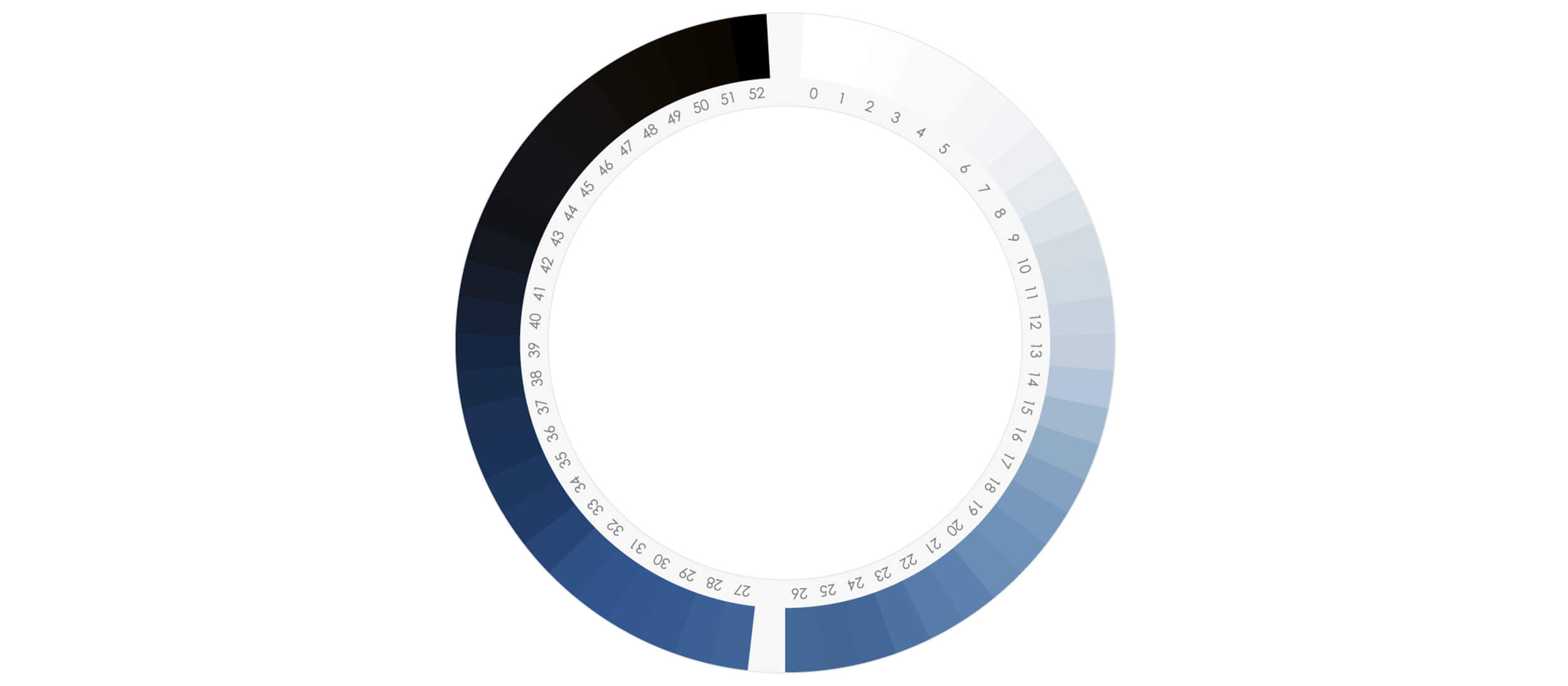
Originally, the cyanometer was used to,
make a connection between humidity,
sky color and altimeter.
This brief outline of colour history shows that colour lovers have always tried to dimension the room and colour and thus also to master it. To understand the effect of colour, one must first get really close to it and sharpen one's view of colour in nuances. What is the subtle difference between light blue, sky blue, and baby blue ? A good tool to do that is the Cynamometer. To differentiate and define the 53 shades of blue is alone colour theory for experts. The German paint specialist and manufacturer Caparol says about blue: "The Germans' favourite colour is blue" - "a highlight for the wall!" The longing for blue on surfaces, on facades and in rooms. (...) How does a blue room feel ? Too chilly, cool, transparent, airy, uncomfortable, light, impersonal widened, heavy, pleasant, melancholy, activating, calm, deep, breathe deeply, serious, celebratory, annoying, noble, heavenly, vast, ... (Source: Caparol.de)
However, it is precisely this sensitivity for choosing the right shades, whether exterior or interior, that is fundamentally very important for designers and architects. Germans in particular still tend to use colour sparingly in their interiors and usually opt for the neutral colour white. Quite different are the French or the English, who playfully or elegantly use a lot of colours and also opaque colours. Harmoniously thought through in facets or skilfully contrasted. In any case, the use of colour in rooms stands for courage and non-conformity. New depths of space are created through colour compositions of light and dark, one behind the other. Rooms take on a new meaning through colour, such as intimate privacy, seclusion, tranquillity, cheerfulness or similar moods. Colour in rooms room for colour emotionally dimensions the room and gives it its extension and character. Only with a practiced eye can colour experts become artists and rooms gain new dimensions through colour. And this with or without a cyanometer. Colour embraces a room and gives it a personal touch.





